In Robert Colescott’s works at Blum & Poe, nothing is black and white
The world has changed — two or three times — since Robert Colescott (1925-2009) made the 20 paintings and 21 drawings in his exhibition at Blum & Poe. But some things haven’t changed, and they are the subjects of his rambunctious pictures.
Colescott depicts ordinary folks doing ordinary things in a nation torn asunder by race, class and sex. Pleasure and frustration drive the people he paints with the laser focus of a political cartoonist and the wait-and-see patience of a neighborhood sage.
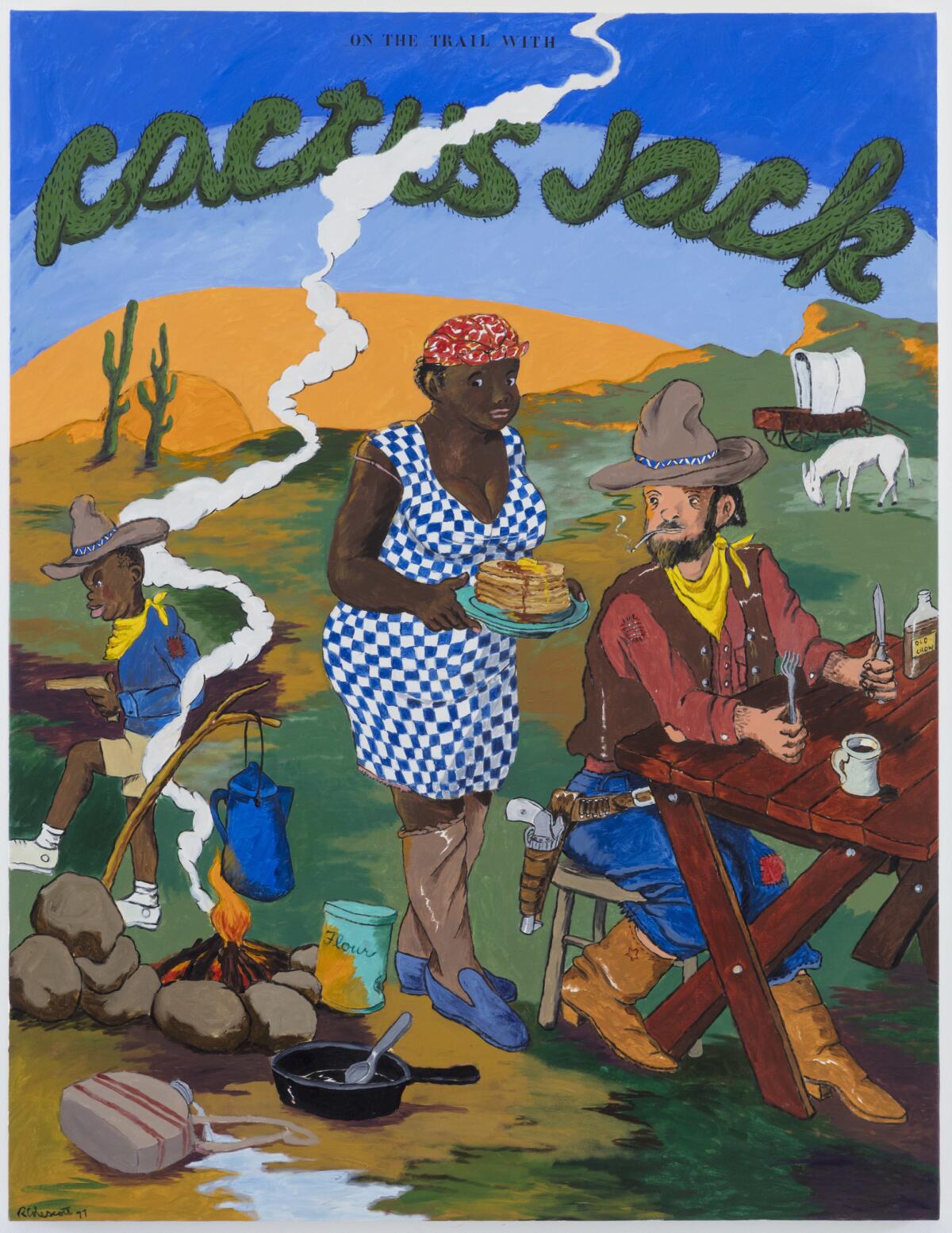
Humor also plays a big part in the human foibles that take center stage. Colescott looks out for underdogs while never romanticizing their struggles, turning citizens into saints or elevating them above others.
Food and sex figure prominently in the first gallery, where nine large acrylics on canvas from the mid-1970s feature cowboys and families along with salesmen and hookers, a peeping Tom, a grandfatherly painter and a row of cancan dancers dressed in patriotic costumes.
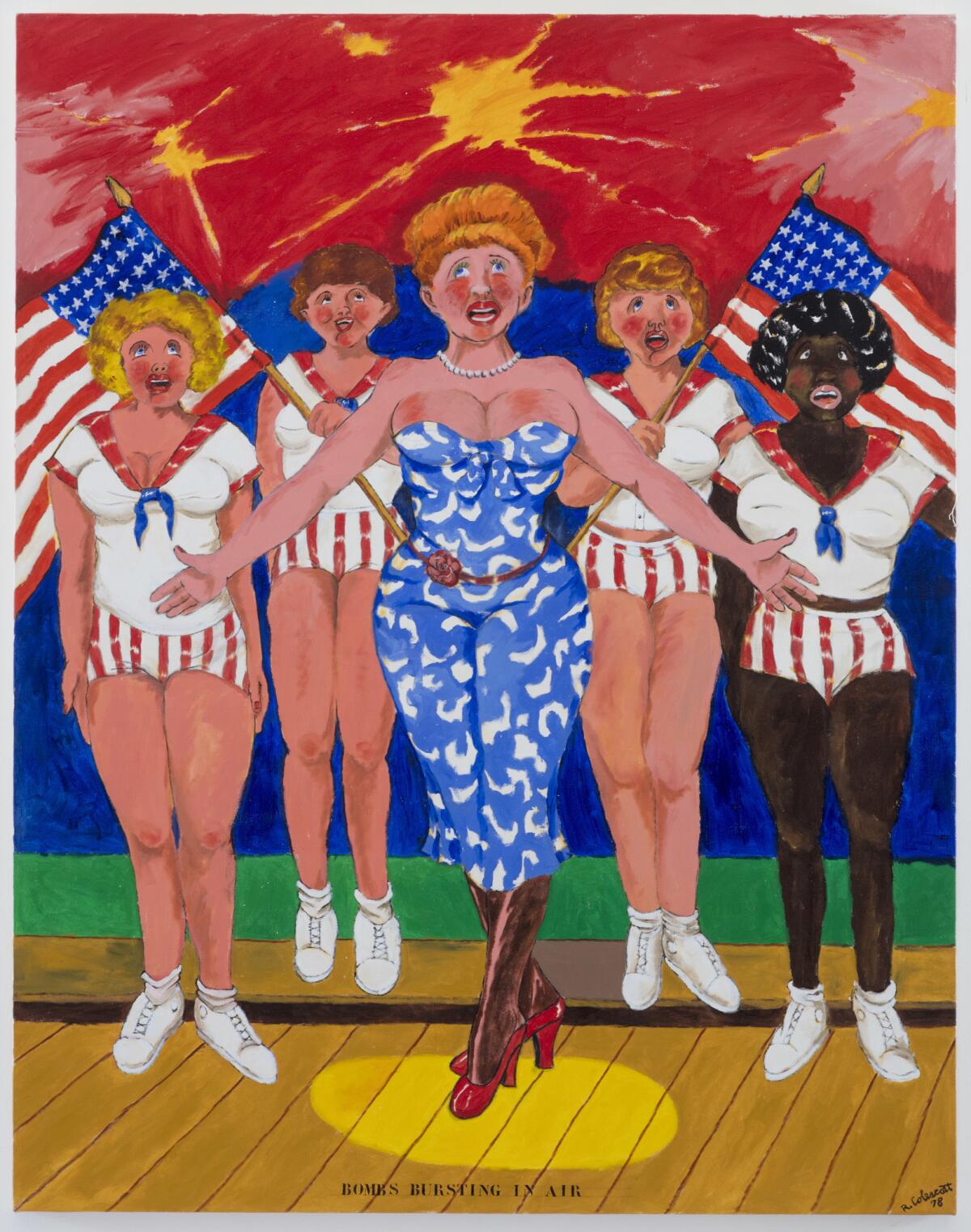
The world Colescott paints is neither heavenly nor hellish. Like life, it’s somewhere in between. Innocence is present but it’s almost always accompanied by some kind of culpability. Power complicates every relationship, raising questions about who is manipulating whom — and how far everyone goes along to get along.
That dynamic takes queasy shape in the second gallery, where six large paintings from the mid-1980s transform Edenic idylls into racially charged dramas. The sexual undercurrent of Colescott’s classic fantasies reveals that dreams can be nightmares, depending upon whose side they are viewed from.
Nothing is black and white in Colescott’s art, not even in the third gallery, where four acrylics on linen from 1970 and 1971 depict shootings and stabbings. Their narratives include a Mexican revolutionary, a Muslim redeemer, a small-time thug and an irate customer, all turning to violence for their own reasons — or for no reason at all.
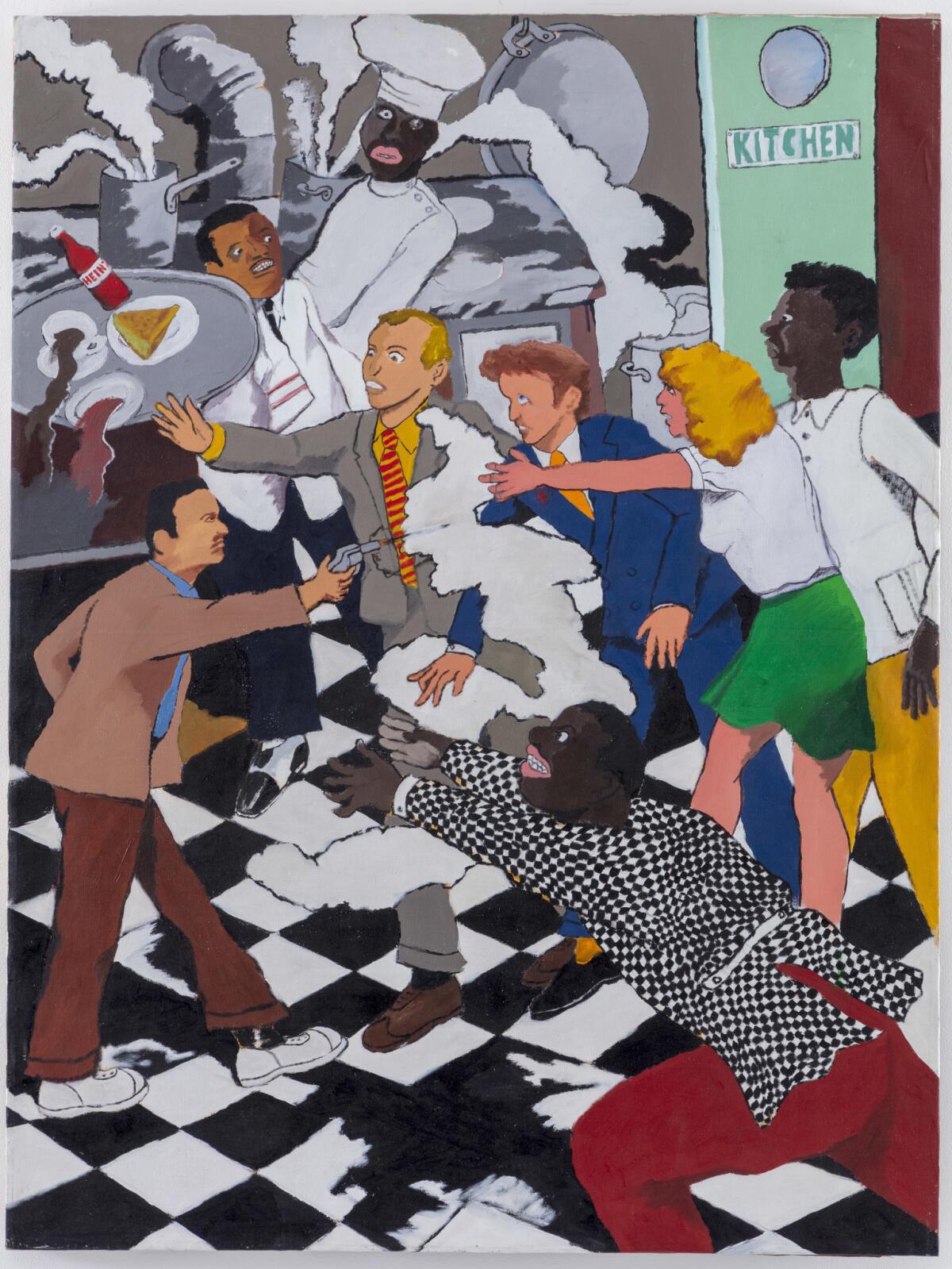
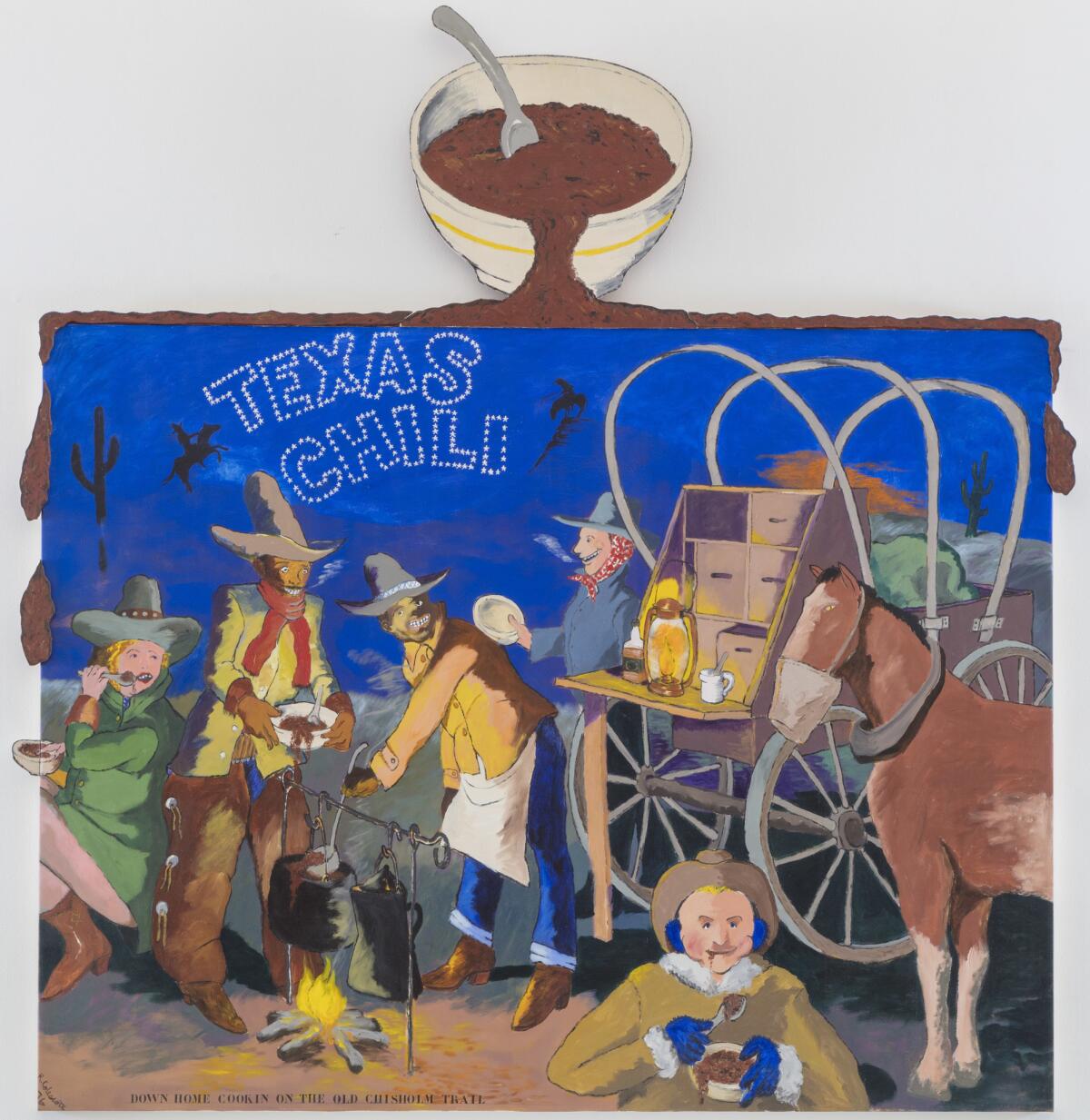
Upstairs, a painting of cowboys chowing down is framed by giant gobs of chili spilling from a giant can. The comical picture anchors a roomful of page-size drawings that Colescott made from 1969 to 1980 in graphite, colored pencil and watercolor. Many are studies for the paintings downstairs. They show Colescott working out his compositions, shifting the race and age of characters until he nailed down the story he was after.
Others stand alone. Aside from an image of the Rev. Martin Luther King Jr. being turned away from the pearly gates by God and his police-uniformed bodyguards, Colescott’s drawings are neither snide nor biting.
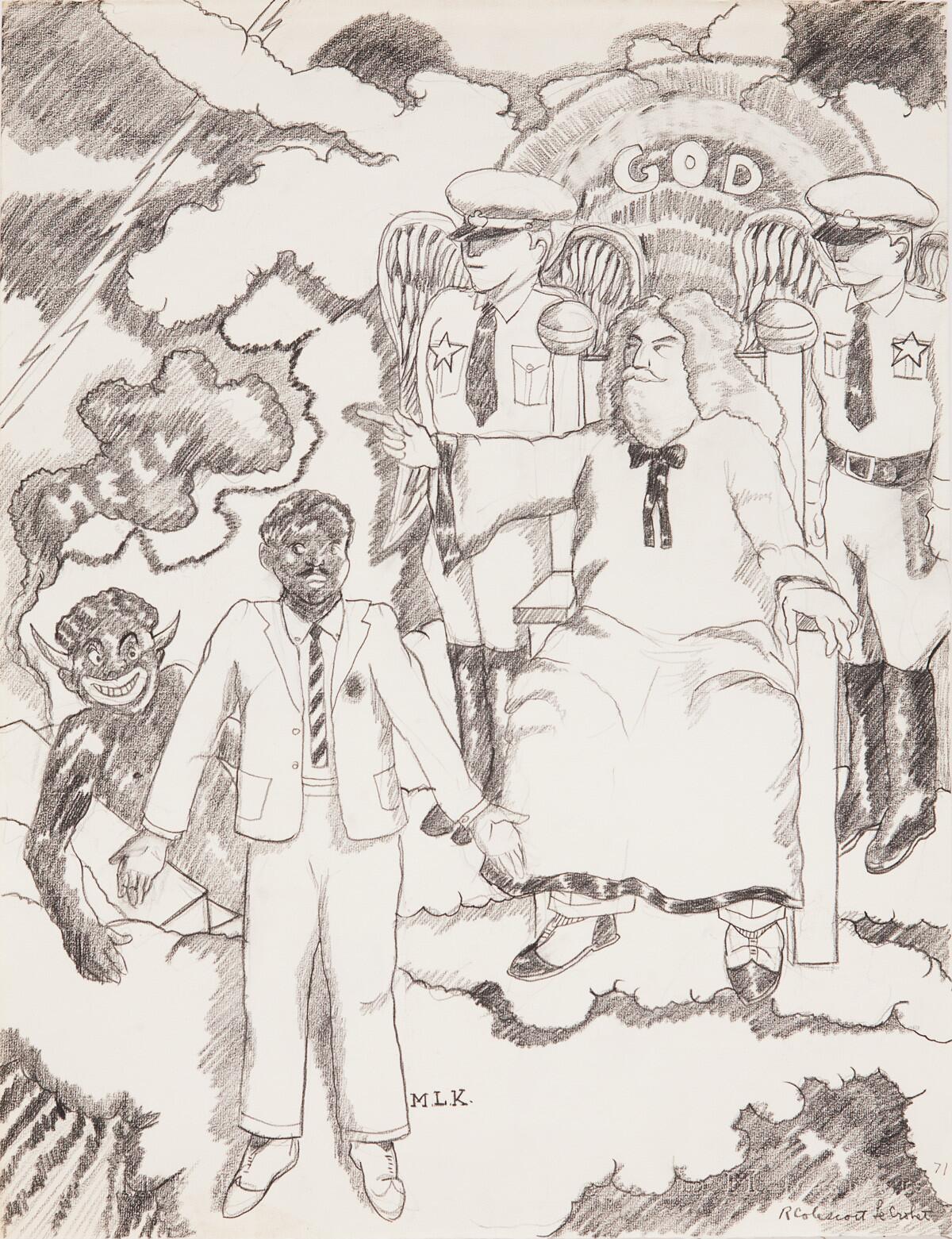
Like his paintings, they are animated by a general sense of goodwill — even a warmth and an optimism — that seem to have vanished from the present. What endures in his work is the sense that we might get along with one another because of what we share: our animal appetites and the funny stories we tell each other when those appetites get us in trouble.
Blum & Poe, 2727 S. La Cienega Blvd., L.A. Through April 28; closed Sundays and Mondays. (310) 836-2062, www.blumandpoe.com

See all of our latest arts news and reviews at latimes.com/arts.
The biggest entertainment stories
Get our big stories about Hollywood, film, television, music, arts, culture and more right in your inbox as soon as they publish.
You may occasionally receive promotional content from the Los Angeles Times.







